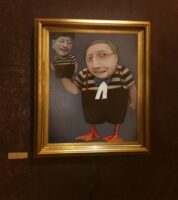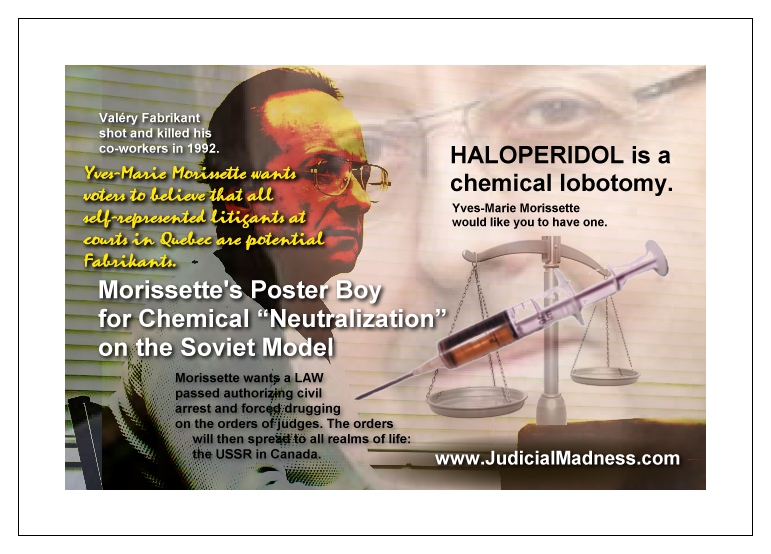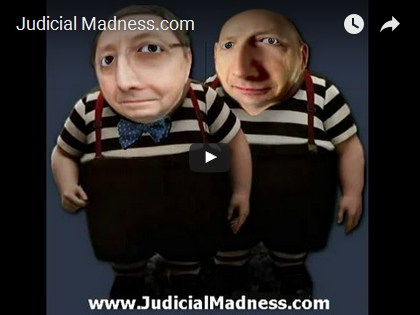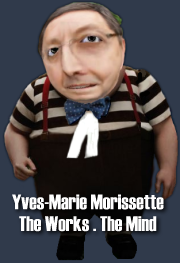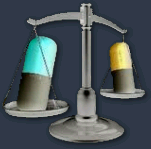Yves-Marie Morissette’s “Erotomania”

Erotomaniacs and people who represent themselves at court without a lawyer (supposed “querulents”) share medical characteristics, says Yves-Marie Morissette. Morissette is a lawyer who has waded into the realm of psychiatry up to his navel, without any psychiatric qualifications to do so.
At pages 3 and 4 of the 2002 version of his paper for the annual Quebec Bar conference entitled “Quelques réflexions sur la quérulence et l’exercice abusif du droit d’ester en justice“, (Some reflections on quarrelsomeness and the abusive exercise of the right to institute legal proceedings) law professor Yves-Marie Morissette draws a parallel between the symptomology of erotomania and that of the alleged “grave mental illness” of “querulence” [querulousness, quarrelsomeness]. However, the analogy alleged by Morissette between these two “mental illnesses” does not in fact exist, as this post will show.
Underscore: we are using Morissette’s words translated into English (clear, below) to disprove his own assertion that the alleged mental illness of querulence exhibits the dysfunction he associates with erotomania, (a personality disorder together with which Morissette categorizes the old Soviet mental illness of political dissidents which he has re-invented as manifested in the “querulous” litigant.)
Says Morissette (who has no psychiatric qualifications, but is a Professor with the Faculty of Law at McGill University):
|
2. La quérulence n’apparaît pas en tant que telle dans les deux répertoires de maladies psychiatriques les plus utilisés, la Classification statistique internationale des maladies et des problèmes de santé connexes de l’Organisation mondiale de la santé3 et le Diagnostic and Statistical Manual of Mental Disorders of the American Psychiatric Association4. Elle présente cependant un tableau clinique reconnu qui partage plusieurs caractéristiques avec des maladies répertoriées, dont la paranoïa et certains troubles de la personnalité (borderline personality disorder, narcissisme, etc.). Le plus souvent, le sujet n’aura pas conscience de sa situation — l’affection est dite « egosystonic » plutôt que « ego dystonic » en ce sens que, comme l’érotomanie par exemple, elle échappe au sujet et s’auto-renforce. Ainsi, les manifestations de rejet à l’endroit du sujet érotomane5 sont interprétées par lui comme une confirmation du fait qu’il est aimé ; le quérulent interpréterait l’échec des recours qu’il exerce comme la confirmation qu’il n’a pas encore obtenu justice. |
2. Querulence [querulousness, quarrelsomeness] does not appear as such in the two most-used manuals of psychiatric diseases, the Classification statistique internationale des maladies et des problèmes de santé connexes of the World Health Organization3 and the Diagnostic and Statistical Manual of Mental Disorders de l’American Psychiatric Association.4 It however presents a recognized clinical picture which shares a number of characteristics with indexed diseases, including paranoia and some personality disorders (borderline personality disorder, narcissism, etc.). Generally, the subject will not be aware of his situation — the affliction is known as “egosystonic” rather than “ego dystonic” in the sense that, like erotomania for example, it escapes the subject and is self-reinforcing. Thus, expressions of rejection toward the erotomaniac subject5 are interpreted by him as a confirmation of the fact that he is loved; the querulent would interpret the failure of the (legal) recourse he exerts as confirmation that he has not yet obtained justice. |
